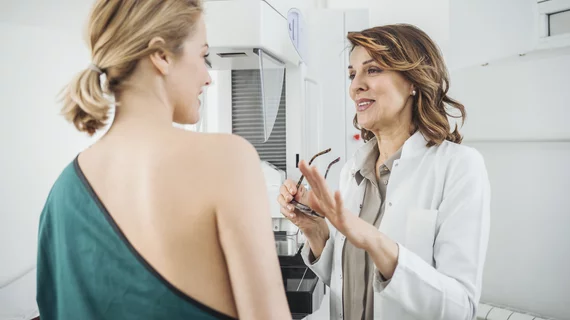Both low- and high-income women experience significant delays in breast cancer diagnosis and treatment when they’re switched from affordable to high-deductible health plans (HDHPs), according to a study published in Health Affairs.
Results from last year’s National Health Interview Survey found more than half of the U.S. adult population under 65 are enrolled in high-deductible plans, lead author J. Frank Wharam, MD, MPH, and colleagues said in the journal. Those plans can cost enrollees up to $7,000 out-of-pocket per person for most nonpreventive care.
“Advocates of cost-sharing in healthcare suggest that exposing patients to out-of-pocket spending will activate a subset of engaged consumers to shop for higher-quality, lower-cost care, ultimately driving competition and lowering prices,” Wharam, an associate professor and director of the Division of Health Policy and Insurance Research at Harvard Medical School, and co-authors wrote. “Others have raised concerns that conditions for value-seeking and competition are not present in healthcare markets and that high out-of-pocket health spending will deter needed care while disproportionately burdening vulnerable patients.”
The authors said previous studies have explored whether rates and types of cancer screening have changed among patients forced to switch to HDHPs, including lower-income members, and found little correlation between financial burden and access to screening. But unlike screening, breast cancer diagnosis and treatment will always require expensive services, potentially putting women in HDHPs in an uncomfortable position.
Wharam et al. examined the time to first breast cancer diagnostic testing, diagnosis and chemotherapy among a subset of women (54,403 low-income and 76,776 high-income) whose employers switched their insurance coverage from health plans with deductibles of $500 or less to HDHPs with deductibles of at least $1,000 between 2004 and 2014. Matched controls were contemporaneously enrolled in low-deductible plans.
Compared to controls, the team found low-income women in HDHPs experienced relative delays of 1.6 months to first breast imaging, 2.7 months to first biopsy, 6.6 months to incident early-stage breast cancer diagnosis and 8.7 months to first chemotherapy. High-income women enrolled in HDHPs saw shorter but similar delays—0.7 months to first diagnostic imaging, 1.9 months to breast biopsy, 5.4 months to early-stage diagnosis and 5.7 months to the first round of chemo.
The authors said their findings were “unexpected,” since they figured more financially secure women would seek care earlier than their lower-income counterparts. They also detected delayed breast cancer care among HDHP members living in metropolitan areas, nonmetropolitan areas, predominantly white areas and predominantly nonwhite areas.
“These results suggest that HDHP-associated delays in breast cancer care are only partially related to patients’ sociodemographic characteristics and that women across the income spectrum might experience high out-of-pocket spending obligations as a barrier to breast cancer care,” Wharam and colleagues wrote. “The delay of approximately five to seven months in early-stage breast cancer diagnosis among women across the sociodemographic spectrum could imply suboptimal breast cancer outcomes.”
The team said their study raises concerns that the majority of commercially insured women with high-deductible plans might experience delayed breast cancer care in the near future.
“In the short term, clinicians and payers should emphasize the importance of presenting for symptoms of breast cancer and not delaying diagnostic testing,” they wrote.

